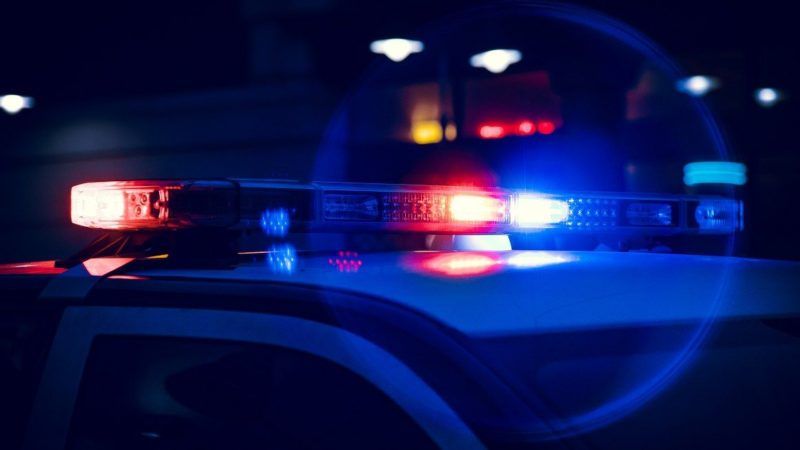Police Deaths Skyrocketed the Last 2 Years Because of COVID, Not Crime
Police deaths surge in 2021, but most deaths were due to COVID, not violent encounters.

The National Law Enforcement Officers Memorial Fund (NLEOMF) last week released a widely cited report in which it claimed 2021 was the deadliest year for American police officers since 1930. But the data is more complicated than that comparison suggests.
The report from NLEOMF says that 458 federal, state, tribal and local officers died in the line of duty in 2021. The foundation says this makes 2021 the deadliest year for officers since 1930, when 312 police officers died on the job. Police officer deaths in 2021 were 55 percent higher than 2020's 295, which was itself significantly higher than 2019's 89 line-of-duty deaths.
What counts as dying in the line of duty? The FBI typically categorizes line-of-duty deaths as either felonious or accidental. Felonious deaths result from crimes against officers, such as stabbing or shooting an officer. Accidental deaths, in most years, are largely composed of car accidents and roadside traffic stop collisions. The National Law Enforcement Officers Memorial Fund has chosen to count COVID-19 deaths because "It has been reported to NLEOMF that these officers have died due to direct exposure to the virus during the commission of their official duties."
Take out COVID-19, and the numbers are much less jarring. The number of officers killed from felonious and accidental actions in 2019 were 48 and 41, respectively; in 2021, 76 officers died felonious deaths and 56 suffered accidental deaths, with the former number correlating with an increase in the national violent crime rate. Although the felonious death rate rose, these numbers are not unprecedented. In 2011, there were 72 felonious officer deaths.
Rather than a huge spike in felonious murders, the 2020 and 2021 line-of-duty death numbers are inflated by COVID-19, with 301 fatalities attributed to the virus in 2021 and the 182 in 2020. Coronavirus caused 66 percent of line-of-duty deaths in 2021.
Line-of-duty deaths provide useful information about the kinds of fatal threats police officers face, but have historically been used by both law enforcement groups and American media to promote the idea that police officers are unique in doing work that is potentially fatal, and thus entitled to legal protections that police critics say prevent accountability and protect bad actors.
On January 5th, the National Fraternal Order of Police tweeted that law enforcement was under attack, "physically, professionally, and rhetorically" while claiming that 2021 was exceptionally dangerous for police officers. Patrick Yoes, National President of the Fraternal Order of Police, released a statement which stated that the previous year was "the most dangerous for law enforcement due to the increase in violence directed towards law enforcement officers, the nationwide crime crisis fueled by rogue prosecutors, and the ongoing pandemic."
However, even with the spike in deaths driven by COVID-19, law enforcement remains a relatively safe job compared to much more mundane occupations. Data compiled by the Bureau of Labor Statistics (BLS) finds that the fatal occupational injury rate for law enforcement is lower than for trucking, logging, and roofing, and a number of other industries.
Whether American police face a greater-than-average threat of contracting COVID-19, the policy response to that problem is widely available and essentially free to the people who need it–officers can get the vaccine, which greatly reduces the likelihood of serious disease and death resulting from COVID-19. However, to use the line-of-duty death data from the National Law Enforcement Officers Memorial Fund to further militarize police or isolate them from accountability would be abusing the numbers to fit an agenda.


Show Comments (50)